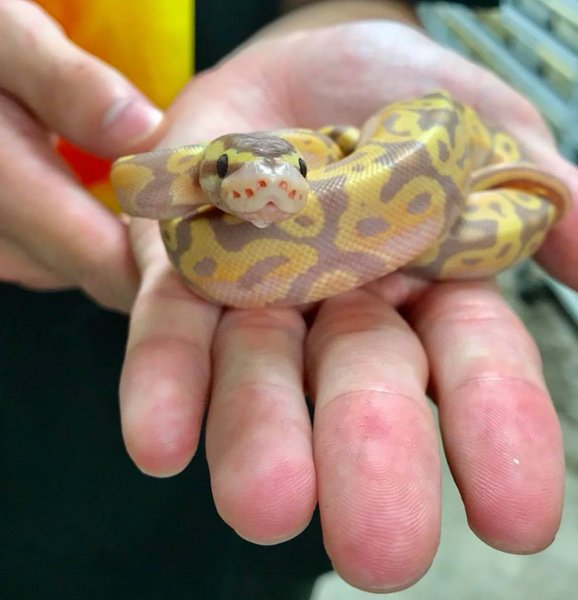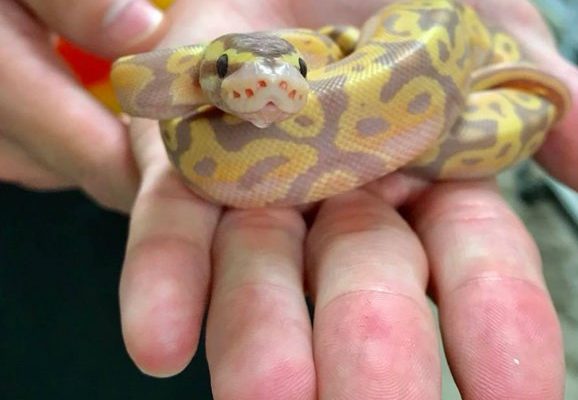
You might be wondering what it takes to provide the best care for a ball python. It’s a mix of creating the right environment, understanding their dietary needs, and knowing how to handle them safely. Think of it like nurturing a small, unique ecosystem. Let’s dive into the essentials of ball python care, so you can feel confident about this adventure.
Setting Up the Perfect Enclosure
To start, your ball python will need a proper home. An enclosure not only keeps them safe but also mimics their natural habitat. The most common choice for housing is a glass terrarium or a plastic enclosure. Aim for a size around 40 gallons for adults, while hatchlings can thrive in smaller spaces.
Ensure the enclosure has adequate ventilation, but also remember to keep it secure—ball pythons are escape artists! Inside, you’ll want to include a substrate like aspen shavings or paper towels for easy cleaning.
A cozy hiding spot is essential. Snakes love to feel safe, so provide at least two hides—one on the warm side and one on the cooler side of the tank. Additionally, include a water bowl that’s large enough for soaking; ball pythons sometimes enjoy a dip to stay hydrated.
Temperature and Humidity: Getting it Right
Temperature is critical for your ball python’s health. They’re ectothermic, meaning they rely on external heat sources to regulate their body temperature. Set up a warm side at around 90°F (32°C) and a cool side around 75°F (24°C). You can use heat mats or basking bulbs to achieve this, but always ensure they can’t burn the snake or overheat the enclosure.
Humidity levels are just as important. Ball pythons thrive in environments with humidity between 50% to 60%. You can maintain humidity by misting the enclosure and providing a water bowl. A hygrometer can help you monitor these levels effectively.
Here’s the thing: Too low humidity can lead to shedding problems, while too high can cause respiratory issues. Finding that sweet spot is essential for your python’s wellbeing.
Feeding Your Ball Python
Feeding a ball python might be one of the more important aspects of their care. These snakes primarily eat whole prey—typically rodents. Hatchlings often eat fuzzy mice, while adults can be fed larger rats. If you opt for live prey, always supervise feeding to prevent any accidents.
Another option is to feed frozen-thawed mice or rats, which many owners prefer for safety reasons. Just remember to heat them up before feeding; a warm meal is more appealing to a snake than a cold one!
You might be wondering about feeding frequency. Hatchlings generally eat once a week, while adults can be fed every 1-2 weeks. Keep an eye on your ball python’s weight and adjust feeding as necessary. If they start to refuse food, it could be a sign of stress, so don’t hesitate to check their environment.
Handling and Socialization
One of the joys of owning a ball python is the ability to handle them. However, it’s crucial to approach handling with care. After bringing your snake home, give them a week or so to acclimate to their new environment before starting to handle them.
When you’re ready, support their body with both hands, and avoid grabbing them by the head or tail. Ball pythons tend to be curious and can be quite gentle, but patience is key. Handle them for short periods, gradually increasing the time as they become accustomed to it.
Socializing is a two-way street. Make sure your python is comfortable with you around. If they seem stressed or agitated, it might be best to wait until they’re more relaxed. Over time, you’ll both get to know each other’s cues.
Health Checks and Common Issues
Regular health checks are essential for any pet, and ball pythons are no exception. Look for signs like clear eyes, a good weight, and a nice sheen on their skin. Shedding should occur regularly—around once a month—but issues can arise. If your python is shedding in patches, it may indicate humidity problems.
Another common issue is respiratory infections, which can happen with poor enclosure conditions. If you notice your ball python is wheezing or has excessive mucus, it’s time to consult a vet.
Also, watch for signs of parasites, such as weight loss or abnormal feces. Prevention is key, so make sure to maintain a clean enclosure and provide the right diet.
Creating a Comfortable Environment
Beyond the basic setup, creating a comfortable environment can enhance your ball python’s quality of life. Adding branches or climbing structures can offer them exercise and stimulation. Snakes are natural explorers, so the more mentally and physically engaged they are, the happier they’ll be.
You should also consider lighting. While ball pythons don’t need UVB lighting as some reptiles do, having a day-night cycle with natural light or low-wattage bulbs can help regulate their circadian rhythms.
Lastly, be mindful of the noise and activity levels in your home. While ball pythons are less sensitive than some pets, a loud environment can stress them out. Creating a calm space will support their overall well-being.
Caring for a ball python can be an incredibly fulfilling experience. From setting up the right habitat to understanding their dietary needs and socializing with them, there’s a world to explore. It might seem overwhelming at first, but take it one step at a time, and you’ll build a strong bond with your new pet.
Remember, each ball python has its own personality and quirks. Pay close attention to their behavior, and enjoy the journey of learning what makes your snake tick. Before you know it, you’ll be a confident ball python owner, ready to share your love for this remarkable species with others!

